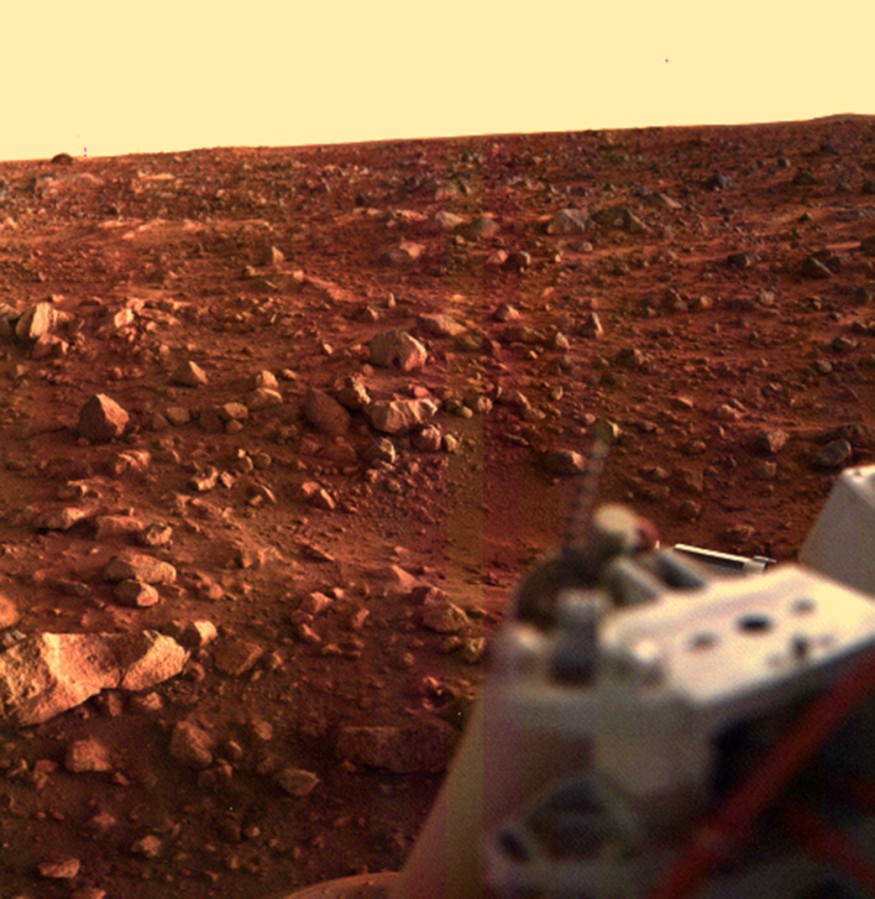
We may have already found evidence of extraterrestrial life. According to one former NASA scientist, we may have discovered it over 40 years ago.
Dr. Gilbert Levin recently published an article in Scientific American detailing the results of the Labeled Release (LR) experiment, of which he was the principal investigator. His publication comes on the heels of recent buzz over the Mars rover Curiosity's recent discoveries about the Red Planet, possibly having life.
Dr. Levin summarizes his research on Mars on his website. The team took inspiration from Louis Pasteur's experiments, which monitored microbes in contaminated broth. Microorganisms release gas due to metabolic processes; however, subjecting the broth to high temperatures would kill off the microbes, halting gas production.
In a nutshell, the LR experiment consisted of adding a drop of radioactive "food" onto Martian soil and monitoring what happened next. If microorganisms were present, they would release radioactive gas as a byproduct of processes related to life. To make sure that it was actually extraterrestrial life producing the gas, the tested Martian soil would be "cooked" afterward, and the experiment repeated. If no gas was produced, then it would confirm the presence of Martian microbes.
The LR experiment was conducted during the Viking Mars Landers Missions during 1976. These experiments proved successful, returning positive results for Martian microorganisms. Both landers were able to replicate the results at their respective sites.
However, the data would also cause years of controversy. The results of the LR experiments couldn't be replicated by NASA in studies following the Viking landings. Studies that were done on data from the 2008 Phoenix lander suggest the presence of oxidative agents in Martian soil that could interfere with the test, possibly flagging the LR results as false positives.
With the announcement that NASA's next Mars missions in 2020 wouldn't have any life-detection tests, Dr. Levin expresses in the article his thoughts on the matter, as well as that of his co-experimenter Dr. Patricia Ann Straat:
"Inexplicably, over the 43 years since Viking, none of NASA's subsequent Mars landers has carried a life-detection instrument to follow up on these exciting results...In keeping with well-established scientific protocol, I believe an effort should be made to put life detection experiments on the next Mars mission possible."
They propose that small and lightweight equipment could easily be attached as a flight instrument to conduct a more robust modified LR experiment to verify Viking's findings from the 1970s.
Dr. Levin also suggests that a panel of expert scientists review newly generated data with that of the original LR experiments. He predicts that, like himself, they would also come to the conclusion that Martian life was already discovered many years ago through the LR experiments.
As of now, the question of whether there is life on Mars has yet to be resolved. With the search for alien life still underway, and with increasingly more evidence pointing to that possibility, it seems like only a matter of time until we can definitively conclude that we are not alone in the Universe.
© 2026 ScienceTimes.com All rights reserved. Do not reproduce without permission. The window to the world of Science Times.











